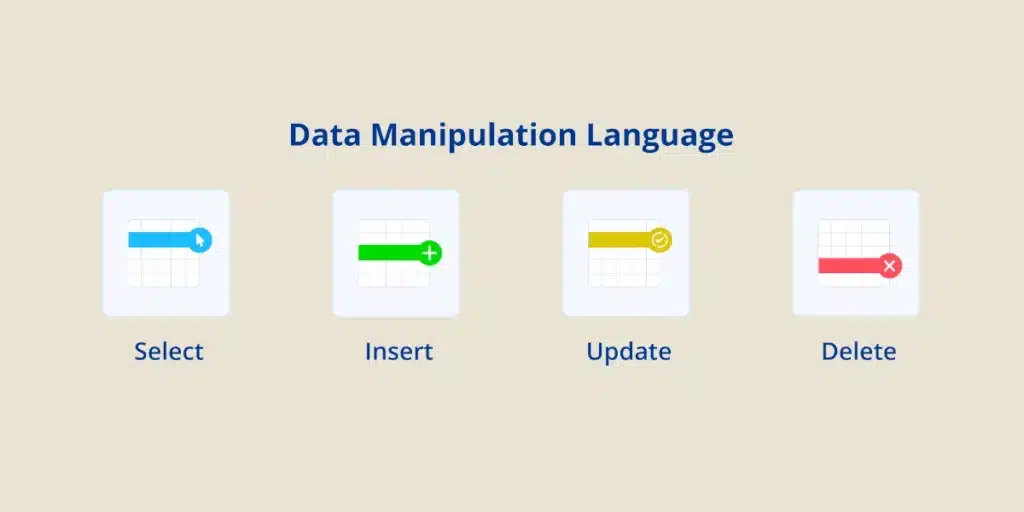In the realm of data management, SQL stands as a fundamental pillar. At the core of this language is DML, a collection of commands crafted for professionals tasked with leveraging the invaluable asset of information.
What is meant by Data Manipulation Language (DML)? These are the commands of the fundamental language for database management known as SQL. DML is employed to access and modify data.
What is the purpose of DML?
Let’s liken a database to a municipal library. The DML would be the set of tools needed to:
- borrow a book (select data),
- mark it as borrowed (update data),
- indicate it has been returned (delete data),
- add new ones (insert data) onto the shelves.
SQL is a language that allows such manipulations at the IT level. It primarily assists in the creation of tables that can be interconnected via common fields. In the library example, one table could catalog each book by its ISBN identifier, detailing its title and author, while another table might show which customer borrowed which book, once again identified by ISBN.
SQL Command Families
SQL manages several command families:
- Data Definition Language (DDL) – used to define the structure of a database and its contents.
- Data Manipulation Language (DML) – the focus of this article.
- Data Query Language (DQL) – used to search for information within a database or table.
- Data Control Language (DCL) – defining access controls in databases,
- Transaction Control Language (TCL) – instructions that permanently validate updates made or allow a rollback to a previous state.

DML Commands
The key DML commands include:
- SELECT: to retrieve data from one or more tables.
- INSERT: add new rows into a table.
- UPDATE: modify values in existing rows.
- DELETE: remove rows from a table
SELECT
This is the most frequently used DML command, enabling a variety of analyses. It assists in extracting crucial information, aggregating data, and is instrumental in generating reports or presentations.
INSERT, UPDATE, and DELETE
These commands are used to update information, which is crucial for a database to remain up-to-date, ideally in real-time, to avoid working with outdated elements.
Automated Processing
DML also enables the automation of certain repetitive tasks through SQL scripts, such as importing new elements.
The Importance of Data Manipulation Language
DML offers a suite of commands that is notably easy to learn and apply. The standardization of SQL language facilitates the use of DML with databases from various providers: Oracle, MongoDB, IBM, Ingres, and more. Additionally, DML allows for the execution of complex operations on large datasets with high precision.
DML is crucial for:
- Cleaning data on a daily basis : correcting errors, resolving inconsistencies, and addressing missing values.
- Transforming data: converting it into a format suitable for analysis.
- Preparing data for modeling.
- Exploring data: identifying trends, and establishing correlations.
- Developing applications.
Who Uses the Data Manipulation Language?

Data Scientists
In their roles, data scientists spend a considerable amount of time manipulating data. Often, before analysis, they must thoroughly prepare and even clean the data, such as by eliminating unnecessary records. They may also need to create temporary tables to test a model or specific approach.
Data Analysts
Data analysts frequently employ DML to extract the data essential for their analyses. They aim to derive insights from the data at their disposal.
Database Administrators (DBA)
Database administrators use DML to oversee daily operations concerning data.
Developers
Developers can integrate DML instructions into their applications to enhance interaction with the company’s data repositories.
The DML: An Essential Tool
The DML is a crucial tool within the data management sphere. Its remarkable ease of use is matched by its potent capabilities, making it a preferred choice for those leveraging data in strategies for business development. Although numerous alternatives have emerged, proficiency in SQL’s DML continues to be a valuable asset in the data industry.










